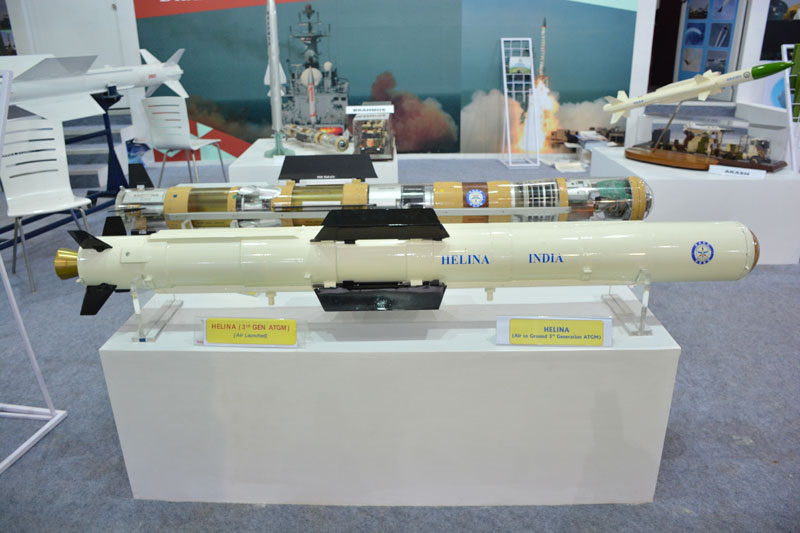DRDO’s upgraded and renamed Nag missile holds the promise of better performance
Palak Gupta
This July, India successfully conducted flight trials of third generation, fire and forget anti-tank guided Nag Missile (HELINA), which has now been customised, upgraded and renamed as Dhruvastra. The trials, done without helicopter, were carried out in ‘direct and top attack mode’ on July 15-16 at Interim Test Range, Balasore, Odisha.

HELINA is an air-launched version of the Nag with extended range. This ATGM system, mounted on the Advanced Light Helicopter (ALH), has all weather day and night capability and according to Defence Research and Development Organisation (DRDO), “can defeat battle tanks with conventional armour as well as explosive reactive armour.” This missile can engage targets both in direct hit mode as well as top attack mode.
Equipped with four foldable wings, the middle portion of the 1.85m long missile accommodates a compact sensor package and the main charge of the warhead. Reportedly, a real-time image processor with quick algorithms is installed next to the guidance section to provide automatic target detection and tracking capabilities.
For the land-attack variant, the ATGM system is again an indigenous Nag missile, also called ‘Prospina’ developed by DRDO, which is third-generation, all-weather, fire-and-forget, lock-on after launch, anti-tank guided missile. It has a single-shot hit probability of 90 per cent and a 10-year, maintenance-free shelf life. The missile can hit targets in desert-like topography and extreme hot temperatures.
Nag’s guidance and warhead: There’s an eight kg tandem-shaped charge high-explosive anti-tank (HEAT) warhead with a precursor and a main charge which provides the missile with a high kill probability. The precursor charge penetrates the tanks and the main charge is intended to destroy the main armour. Coming down to its guidance system, a passive imaging infrared (IIR) homing seeker guides the missile to the target after its launch. Fire and Forget technology, which is a hallmark of advanced and sophisticated AGTMs, means once released, it locks itself to the target using digital imaging.
DRDO had developed the Nag ATGM under the integrated guided missile development programme (IGMDP), which also includes four other missiles—Agni, Akash, Trishul and Prithvi.
ATGMs from Global OEMs in India’s Inventory
Additionally, against the backdrop of border tensions with China at Line of Actual Control (LAC), the Indian Army, as a part of emergency procurement, has decided to place a repeat order for Spike-LR (Long Range) Anti-Tank Guided Missiles (ATGM) from Israel.
Last year as well, following the February 2019 military standoff between India and Pakistan, the Indian Army had approved the procurement of 240 Spike ATGMs and 12 launchers as part of an ‘emergency purchase’ to meet immediate operational requirements.
Back in 2019, a total of 210 missiles along with 12 launchers were delivered to the army from Israel under a Rs 280 crore deal, as a part of its ‘emergency purchase’ mechanism.
The Indian Army had inducted the first batch of Israel-made Spike ATGMs along the Line of Control (LC) in northern command theatre in Jammu and Kashmir in November 2019 to bolster defence along the country’s border with Pakistan.
The second lot is likely to be deployed along the country’s border with China given the ongoing border tensions on LAC in Ladakh. Despite the disengagement process underway, China has placed its weapons along the LAC.
You must be logged in to view this content.

